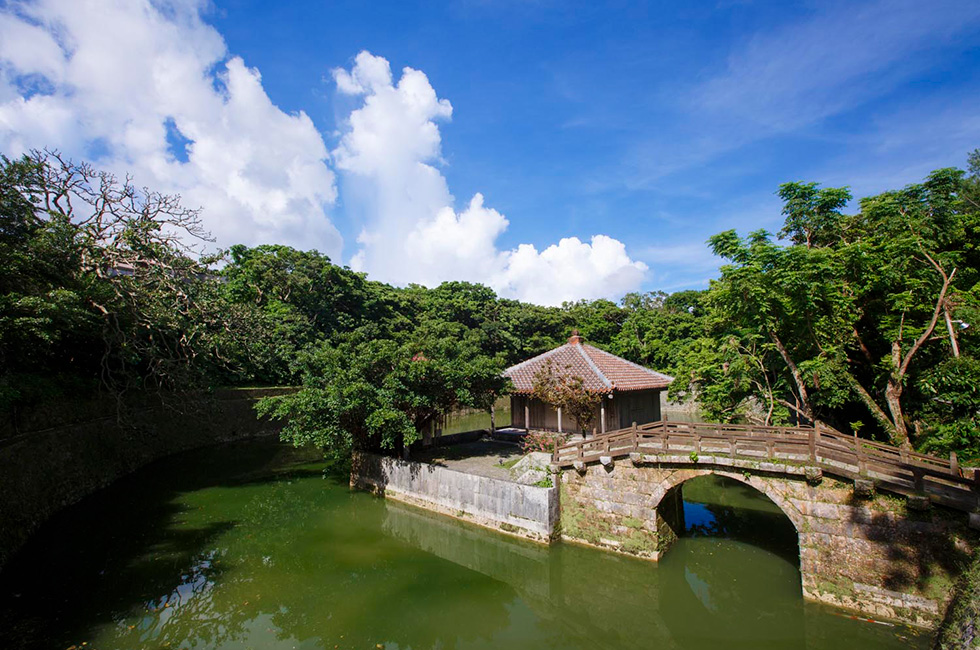Enkanchi Pond and Bezaitendo
Home > Visitor’s Guide > Ryukyu Kingdom exploration ~American writer's gaze~ > Enkanchi Pond and Bezaitendo
Enkanchi Pond and Bezaitendo

Enkanchi Pond is a reservoir with stone walls located immediately outside Shuri Castle’s northern wall. Constructed in 1502, it is part of a gravity-fed system designed to collect water from natural fresh water sources at the castle and transport it to the Ryutan Pond below. Enkanchi was integrated into a complex of Buddhist architecture that included the adjacent Enkakuji Temple.
Bezaitendo
The small island constructed on one side of the pond is the site of Bezaitendo, a small Buddhist temple hall. It was initially built to house a set of important Buddhist sutra scrolls that were presented by a Korean king in the mid-fifteenth century. The original structure and the scrolls were lost in 1609 during the invasion by the Satsuma domain of Kyushu. A statue of the protective female deity Benzaiten, previously housed at nearby Enkakuji Temple, was installed when the temple was reconstructed in 1621, and the hall was rededicated to her. This statue was replaced by one sent from Satsuma in 1685. Made of unpainted wood and devoid of decoration, the simple, strongly geometric hall’s harmonious relationship with its environment is a marked characteristic of Ryukyuan architecture.
Tennyobashi Bridge
The island on which Bezaitendo stands is connected to the nearby shore by a picturesque high-arched bridge of Ryukyuan limestone called Tennyobashi (originally Kanrenbashi) Bridge. Based on bridge designs found in southern China, Tennyobashi has a balustrade intricately carved with lotus blossoms and design details that emulate wooden bridge construction. It is one of several architectural monuments in Shuri that illuminate the vital cultural and aesthetic interchange between China and the Ryukyu Islands. An additional arched bridge called Ryuenkyo, roughly contemporaneous with Tennyobashi, spans a water outlet in the stone wall between Enkanchi and Ryutan. Although Bezaitendo was destroyed during the Battle of Okinawa in 1945, Tennyobashi suffered less damage. Both were restored in 1969.
© Shurijo Castle Park All Rights Reserved.


